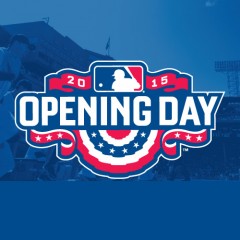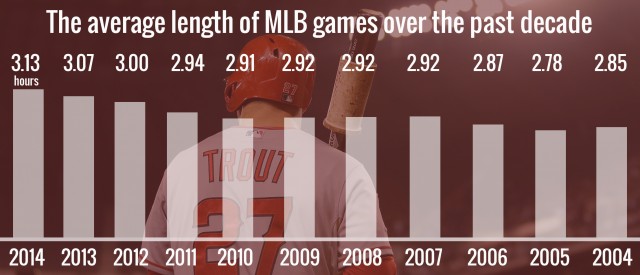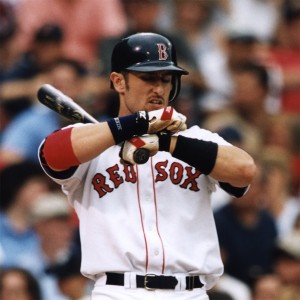
It’s almost time to “Play Ball!” And as a fan of not just the Baltimore Orioles but the game itself, I feel it’s time to address a few items before the first pitch is thrown, the first strike is called, and the first batter rounds first base.
It all stems from the changing, or more accurately, tweaking of the game because of rule changes, but I’m going to start by addressing some of the points from Rob Manfred’s letter to the fans, as the new Commissioner of Baseball, before I get into the changes themselves.
First off, his letter is well-written and filled with good intentions.
His third paragraph reads as follows: “The mission before us is clear: To honor the game’s history while welcoming new people to our great sport — people who will one day pass their love of baseball down through the generations. That is what our parents and grandparents did for us, and it is what we are doing for our own children. Baseball is a game firmly rooted in childhood experiences, and its vitality and growth rely heavily on giving young people from all backgrounds the opportunity to play and watch baseball.”
I don’t disagree with this mission. In fact, I will counter that with the baseball being one of the least growing major sports in America, this is not only just a mission, it is a moral imperative for the game itself. Manfred continues, saying, “We will continue to internationalize our game and to celebrate the fact that we have the most diverse rosters in the world.”
This is something I will never understand because, like the NFL, baseball flourishes where it flourishes and doesn’t where it doesn’t. I understand that baseball isn’t just part of the fabric of the United States; the Far East, Central America, and the Caribbean enjoy their baseball – or beisbol – as much as any other areas, and at times with more fervor than the Yankees vs. Red Sox Rivalry once had.
But like the NFL has found out by playing games in London, and as Manfred said in his third paragraph, “people who will one day pass their love of baseball down through the generations,” which is to say, American Football doesn’t belong in the United Kingdom and baseball should know enough to understand where it thrives and where it doesn’t. It should know enough to see that it doesn’t belong where it doesn’t belong. You don’t see cricket taking the US by storm, do you? And with good reason… They know where their audience is!
Manfred also states that “Another priority for me is to continue to modernize the game without interfering with its history and traditions.” This is where Manfred, the Commissioner, and I, the fan, head to two vastly different places. I understand the need for modernization. Last season’s expanded instant replay was great and can go even further, but that’s not unique to baseball. Even the world’s most popular sport is expanding it’s reliance on technology, albeit goal-line technology.
But it appears that the “Pace of Game” changes being used for the first time this season, are a way to speed up the game and modernize it, but I don’t think this does anything but create a new history and new traditions, while turning up it’s nose at the old traditions to make more money with television.
The beauty of baseball was always that it happens, as it happens. There is no clock. The pace of the game is dictated completely by the players on the field. These pace of game changes, though I haven’t seen them in action yet, can only lead to three things, in my mind, though I’ll be happily proved wrong. One, a struggling pitcher will get pulled quicker, as he can’t take his time on the mound to try and compose himself. Two, not pulling a struggling pitcher will only lead to more offense. Three, which happens to bethe other side of two, more runs will be scored and the offense is the beneficiary of this new speedier game.
You can read all about the official pace of game rule changes here, but the fact remains, I think this is being done for the wrong reasons. I’m far from a Yankee fan, but Derek Jeter was a class act who had a batting routine that would be outlawed within the new game starting this year. He got out while the getting was good. His onetime rival, Nomar Garciaparra, took 40 seconds just to get his batting gloves in order after each pitch, but these new rules would make him have to ignore his own superstition or speed it up.
These new rules will, in fact, speed up the game, but at what cost? The biggest loser to these pace of game changes is superstition. And as a fan of the game itself, superstition should not be legislated out of the game. It is part of what makes the game unique, and American.
But then, talking about pace of game changes with my father, who did pass his love of the game down to me, another option came from him; change the strikezone. But that’s not quite accurate. You can shrink the strikezone, which has apparently shrunk all on its own, or you can put it back to it’s original size (over the plate from the knees to the chest). As my father mentioned to me, pitchers have control and they aren’t pitching like they used to.
Pitchers used to pitch to contact. The complete game used to be a common daily thing in the big leagues, not a celebrated rarity. Pitchers used to pitch for the team, not themselves, and there was no pitch count. But the strikeout became sexy and instead of pitching to get they guy out, pitchers started pitching to strike him out.
So back to the point: shrink the strikezone so it’s harder to find and the hitters can more easily focus on a zone, or (and I like this idea better) go back to the pre-modern strikezone that was good enough for Williams, DiMaggio, Ruth, Mays, and Clemente. This will force batters to swing more, the pitchers will still be able to go after their strikeouts, and maybe there will be a few less 14-pitch, 25-minute at bats.
Well, for as obvious as changing or solidifying the ever-changing strikezone might be, it’s not on the table, nor do I think it will be. And don’t even get me started on the small fact that the Ted William’s era strikezone doesn’t even exist in video games!
In any case, before this musing itself turns into a three-hour-plus affair, I should speed it up… “Play Ball!”



